The Art of the Blacksmith
Dedicated artisans keep the art and craft of metalworking alive, from historical artifacts and statues to decorative architectural railings.
Fire, smoke and sparks surround a bearded man in a leather apron. He levels a hammer on red-hot metal on a sturdy anvil. Using careful blows he shapes a medieval sword or knight’s breastplate, a horseshoe or a simple carpentry nail. This image of a blacksmith plying his trade spans time and continents, a staple of village and city life for thousands of years.
Over the last century, though, the ringing of steel on steel has been all but silenced in daily life. If you own a horse, you’ll know that farriers still ply the trade in rural areas like ours, carrying traditional tools and small-scale forges to shape and bend horseshoes in stables across Headwaters. Tucked away in other local barns, workshops and studios, artist blacksmiths maintain another foothold on the practice. Some have fine art degrees, but all work much as their forebears did.
These artists create new decorative and functional works using the tools and methods of bygone eras. While many echo items that were once everyday objects, today’s hand-forged items are now bespoke pieces with price tags that reflect the care and labour involved in crafting them. They also offer a new product: courses to satisfy others’ curiosity about an ancient craft that pushes back against our throwaway society.
We meet four regional artisans who are keeping the metallurgical arts alive every time they hammer on an anvil, fire up the kiln or heat the welding torch.
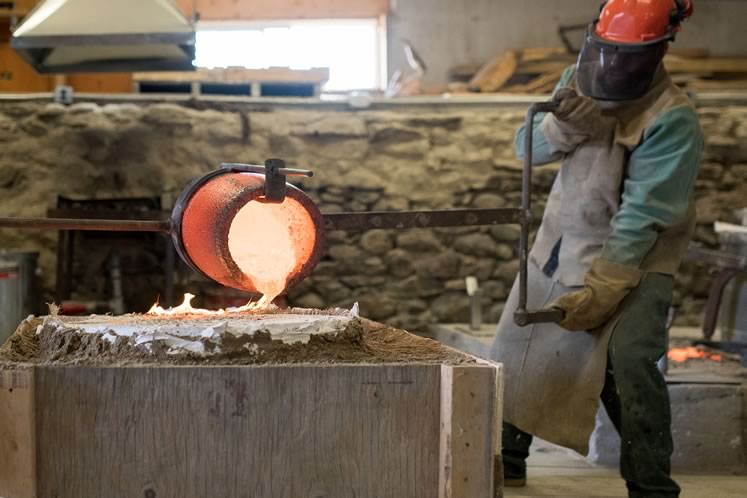
Molten bronze is prepared for a pour at John M.J. Farrugia’s Craganrock Studio in Mono. Photo by James MacDonald.
John M.J. Farrugia \\ Mono
Sunlight seeps through the weather-warped beams of an old barn, playing across jagged, eye-catching works including bronze statues of skeletons and large plumes and hexagons of tightly packed cedar strips fashioned by hand. The place feels cathedral-like.
Owner and sculptor John Farrugia walks slowly through the barn, explaining each piece in intricate detail. They take a lot of time to make – a full-size bronze statue can take up to two years – and John wouldn’t have it any other way. “The time-consuming nature of the practices behind the wooden sculptures and my bronze work allows for thought and reflection, and is as important as any piece of equipment or training.”
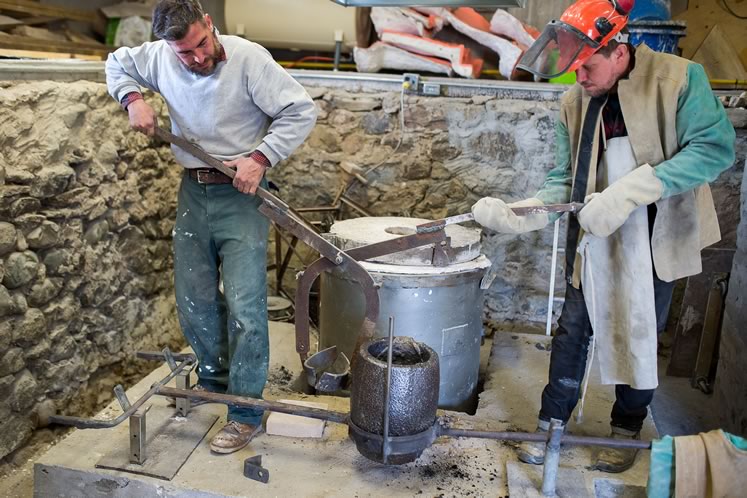
John, 43, uses the “lost wax” process of casting, which has not changed significantly in thousands of years. Photo by James MacDonald.
John’s Craganrock Studio foundry came into being in 2013 after he completed his studies at the Edinburgh College of Art at the University of Edinburgh, with a PhD in sculpture and art history. The studio is designed around an original stone foundation beside the barn gallery on the sprawling Mono property, a family compound where he lives with his parents and two of three siblings and their families. Sculptures, test pieces, wire frames and mold materials are organized around the central kiln and furnace he uses to melt metal for casting. (He will be holding workshops here in the future. Follow the studio on Instagram for details.)
John, 43, uses the “lost wax” process of casting, which has not changed significantly in thousands of years. As he moves around the studio in preparation for the next pour, he follows in the footsteps of generations of master craftsmen who used or still use copper-based alloys such as bronze, from the ancient Greeks to the workshop of Lorenzo Ghiberti in 15th-century Florence, to the Kingdom of Ife in modern-day Nigeria. “The lost wax techniques have remained quite similar throughout time. It connects me to them and them to me.”
Draped in a thick leather apron to ward off sparks and heat, John moves with a youthful energy and a soft-spoken enthusiasm. He is an artist in his element, choreographing a complex dance. About to pour another casting for a full-sized statue of an 1830s-era woman holding a market basket (the finished work now stands outside Rosemont Hall), John lays out the steps.
First he creates the original model, usually of clay, Plasticine or wood, then makes a mold of it. He uses the mold to make a wax duplicate, which is then encased in a plaster-based mix for the “investment mold.” This mold is placed upside down in a kiln at 1,000 F until all the water has evaporated and the wax has melted out.
“This now leaves the negative space and shape of your wax duplicate inside the investment mold,” John explains. He fires up the blast furnace where he melts bronze ingots for the pour, to fill that negative space and create the components of the statue.
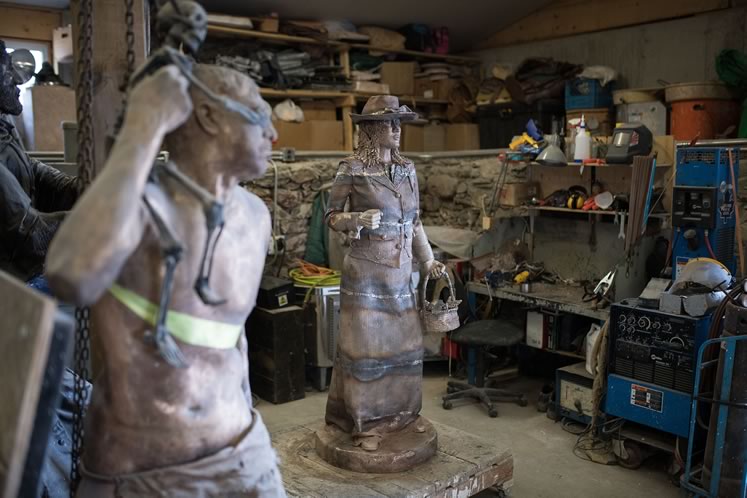
Two bronze works-in-progress, John created the 1830s woman who now stands at the Rosemont Hall on Highway 89. Photo by James MacDonald.
As heat emanates from the molten bronze, the castings slowly cool from a bright orange to a dull red. He will leave them overnight and break them from the mold in the morning. Next he’ll weld together nearly a dozen castings to make the whole statue. He’ll remove any seams and add patina with waxes and chemicals to every wave of hair, every button and pocket. A full-size statue like this can take 18 months to two years from conception to finish and cost $70,000 to $100,000.
Today, John looks pleased with the pour, content in his continuation of the craft and this project. “This understanding of how things were made and created by those who came before me has been a source of inspiration and learning. It has left a lasting impression and informs how I approach the act of creating.”
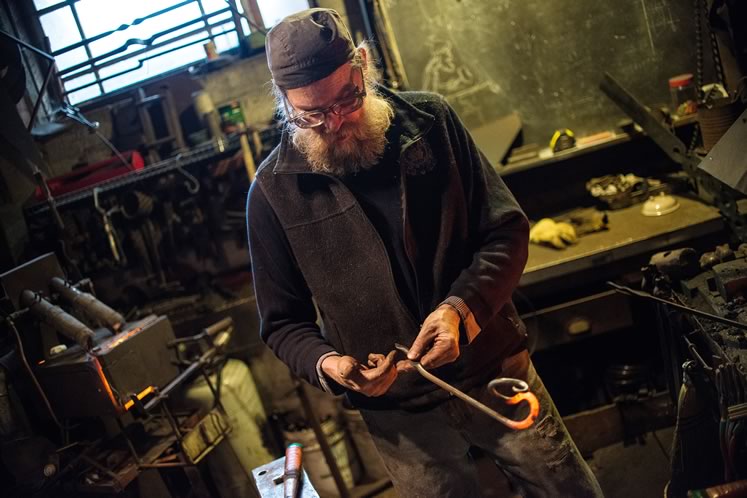
Darrell Markewitz is an expert in recreating Celtic and Nordic tools and artifacts and Art Nouveau-style pieces such as architectural railings. Photo by James MacDonald.
Darrell Markewitz \\ Wareham
In the thick spring fog, the wood-framed houses, the tidy farms and the rushing stream winding through the hamlet of Wareham north of Dundalk make it seem as though time has paused here, a fitting sensation while on the hunt for a traditional blacksmith.
At the Wareham Forge, blacksmith Darrell Markewitz specializes in Celtic and Nordic tools and objects inspired by the Late Antiquity, Middle Ages and the Viking Age. Darrell is tall and thin with a grey beard reminiscent of Dumbledore, adding to the mythical air. His kind eyes are covered by wide safety glasses and his giant soot-covered hands deliver a crushing handshake. These hands create simple hooks and tools used by historic re-enactors to demonstrate daily life at places like Black Creek Pioneer Village, as well as period-accurate swords, architectural railings, decorative candleholders and heavy urns. When not recreating historical items, he leans toward Art Nouveau-esque flourishes in his commissions. (Check his website for information on the commissions he will accept – and those he will not, such as copies of work by others – and his prices. A 42-inch-high railing, for instance, starts at $350 per linear foot.)
“I am drawn to create objects that are at their core functional, but at the same time are beautiful to look at,” he says.
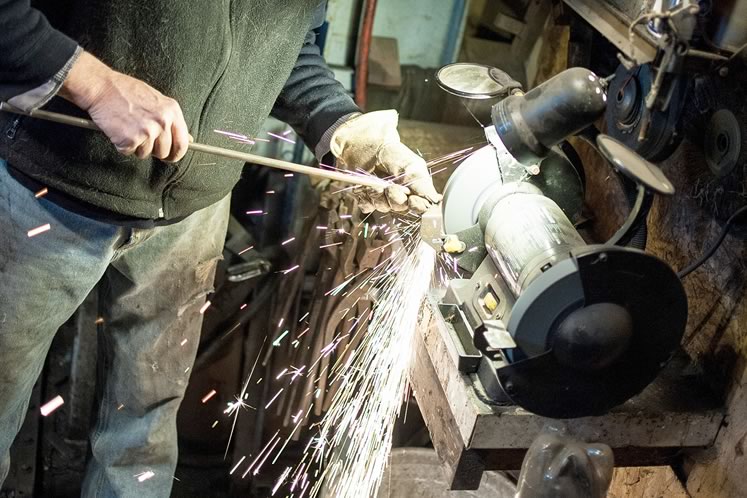
At Wareham Forge he grinds metal and works a piece of steel on his anvil, using the horn, the flat and the back of the anvil as pressure points. Photo by James MacDonald.
Now 62, Darrell says he is part of a generation of Canadian blacksmiths who had to piece together the trade from the ground up because traditional apprenticeship programs have declined since the 1930s. He started the forge in his 20s while studying at the Ontario College of Art (now OCAD University) and worked as a blacksmith and historical interpreter at Black Creek Pioneer Village in Toronto.
His commitment to the craft led to consulting work for L’Anse aux Meadows in Newfoundland (the first confirmed Viking, and therefore European, settlement in North America, now a UNESCO World Heritage Site) in the mid-1990s. There Darrell helped create and facilitate blacksmith workshops and replica construction. Today, he teaches in the Artist Blacksmith program at the Haliburton School of Art & Design. He also offers blacksmithing courses in Wareham: “I consider it a responsibility to ensure what I have learned – often painfully! – is passed to younger hands.”
His barn workshop is full of old machines, old projects, and piles of metal and supplies. He slides the wooden studio door open and a great blast of heat from two of his many forges – one heated by charcoal and one by propane – rushes out. This is where Darrell explores what he calls the “infinite flexibility of steel that, when forged, inspires so many creative possibilities.”
Each project begins with raw steel, heated to the point where it becomes malleable. Like most smiths, Darrell doesn’t need a thermometer to tell him when the metal is hot enough – he can tell by the shade of orange. Then he moves the piece to the rough-edged anvil and begins to shape the soft metal, using the horn, the flat and the back of the anvil as pressure points to form a long, curved architectural piece for a railing or post.
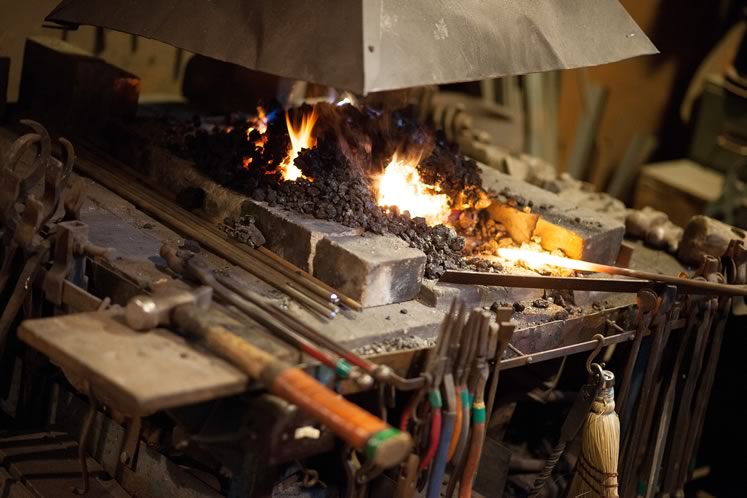
The coalfired forge is where raw steel is heated to malleability. Like most smiths, Darrell can tell when the metal is hot enough by the shade of orange. Photo by James MacDonald.
It looks easy in his hands, but Darrell shares the time-management math underpinning his deft moves: “Twenty minutes to make the thing. Twenty hours getting ready for the work. Twenty years to know how.”
The result is items that should last decades, “if not centuries,” unlike the fabricated and more fragile metal items common today, he says. “In a world that increasingly holds the paradox of disposability against shrinking resources, well-executed forge work offers extreme durability.”
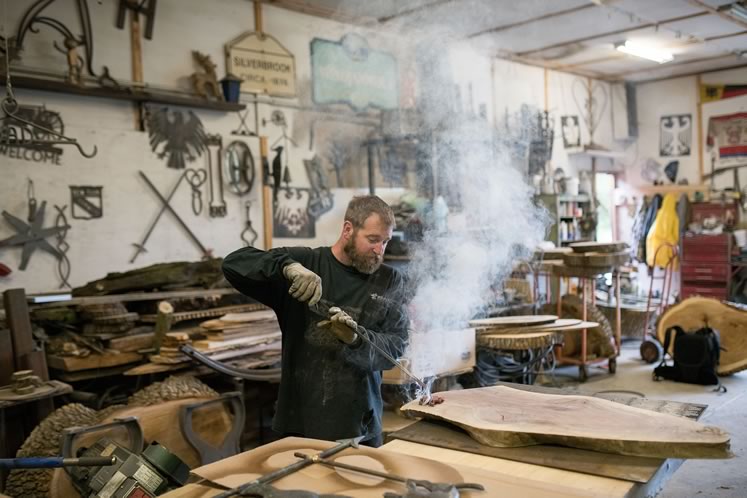
Tyler Kueper at work with redhot metal at his Iron Butterfly studio. Photo by James MacDonald.
Tyler Kueper \\ Tioga
Tyler Kueper’s journey to becoming a blacksmith isn’t a lot different than it might have been a century ago. An ironworker by trade, Tyler knew about connecting beams on highrises and elevators, but learned blacksmithing from his neighbour Al Healy. Al founded Iron Butterfly in 1999 and, after working with Tyler for a few years teaching him the trade, he passed along the company to the Kueper family in 2012. Tyler’s brother Zane works with him as a welder and artist at the workshop northeast of Mansfield.
Under Tyler’s direction, the company has grown from a small local operation to one that sells custom metal pieces like firepits and grills, signage, tools, architectural pieces and furniture across central Ontario. Current customer favourites include screened fire pyramids from 4-feet to nearly 8-feet high (they cost from $750 to $1,100). With easy access to the markets of Toronto, Barrie and the Muskokas, the company has grown under Tyler’s watch. He jokes, “Now with the Internet you can ship stuff anywhere!”
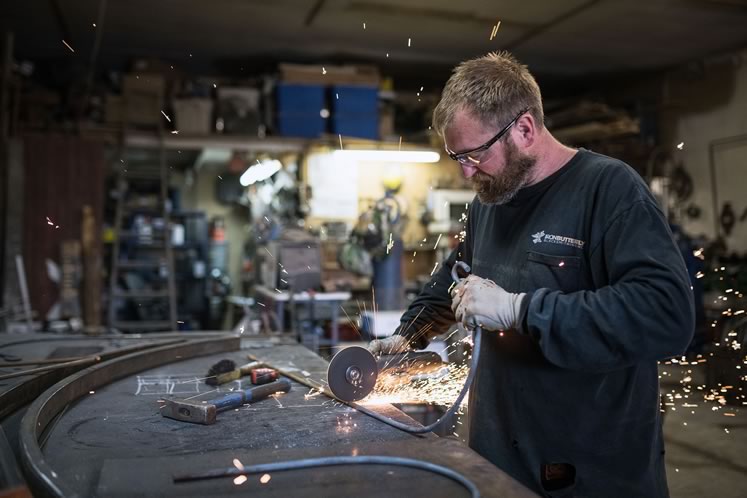
He and his team create everything from pyramid firepits to liveedge wood tables with forged steel legs. Photo by James MacDonald.
Asked where he draws his inspiration, Tyler’s response is instant, if not rugged or rural: “Old Montreal, anywhere in Europe, is just beautiful. The old metalwork is breathtaking stuff.”
On a rainy May day, a ruckus of laughter fills the workshop. Tyler, 33, holds court over his crew of craftsmen, blacksmiths and the odd neighbour, enjoying an easy Friday afternoon around a giant handcrafted tree-trunk table, beers in hand. Tall and broad, with a booming voice and easy smile, Tyler is a hard man not to like.
Tools, tables, works in progress and an occasional roughly forged sword fill every wall and square foot of floor. There seems to be no project too small, too large or too intricate for the Iron Butterfly crew to take on (yes, they’ll even do repairs). One current passion project is a 13-foot-long potato masher with a 4-foot diameter destined for the Guinness World Records.
The space is part blacksmith forge, part woodshop and part industrial metalshop. Tyler credits the shop’s one woman partner and family friend Nadia Pozzebon with keeping it just this side of full man cave. Nadia, who joined the team in 2016, is a part-time welder, woodworker and designer specializing in live-edge wood and recycled metal artworks. She has also pulled Iron Butterfly into the world of social media and community craft shows.
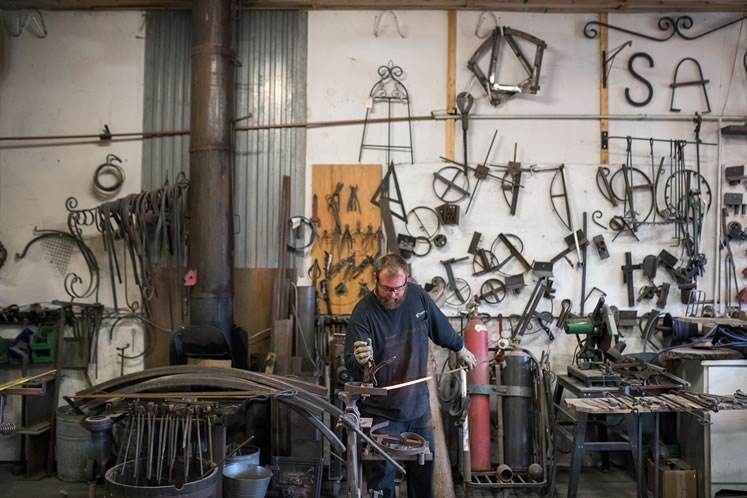
The myriad forged pieces and collected items at Tyler’s workshop make for an artful display. Photo by James MacDonald.
While Iron Butterfly does serve industrial clients, Tyler and his team try to steer clear of purely commercial projects in favour of creative work. “People have more appreciation for the artsy work. They love it, they know it’s going to last forever. Go on for generations, pass it down. Just like the tables I build. You buy it once and you are going to have it for 500 years.”
Wannabes who’d like to learn from Tyler just as he did from Al will soon have the chance, once insurance is in place, of course: “Everything in here is either sharp or hot!”
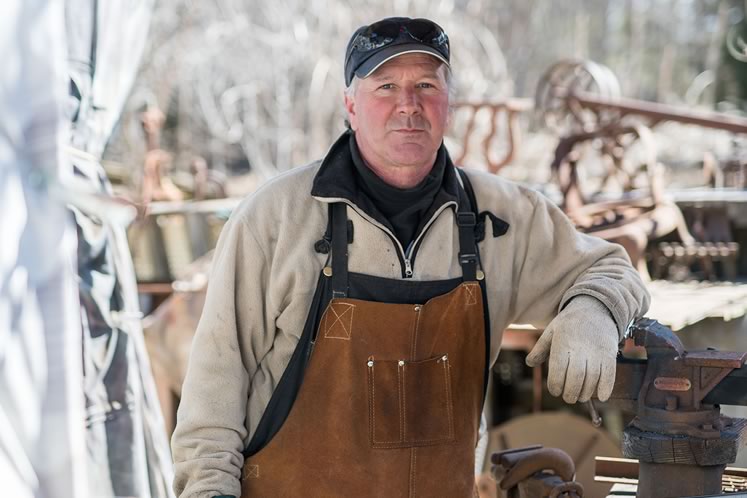
Artist Dan Sinclair at his indoor-outdoor Iron Bonsai workshop. Photo by James MacDonald.
Dan Sinclair \\ Amaranth
As a trained arborist and bonsai artist, Dan Sinclair started working with greenery rooted firmly in the soil. Yet as the name of his Amaranth studio, The Iron Bonsai, suggests, he now coaxes those crooked, soulful bonsai shapes out of metal, either made with thousands of small welded pieces of vintage wrought iron or hand forged from steel bars.
He expanded his repertoire in this direction in the 1990s after he learned ironwork and welding. “I’ve always been doing art since I was a child. Ironwork enabled me to learn and have fun with metal.”
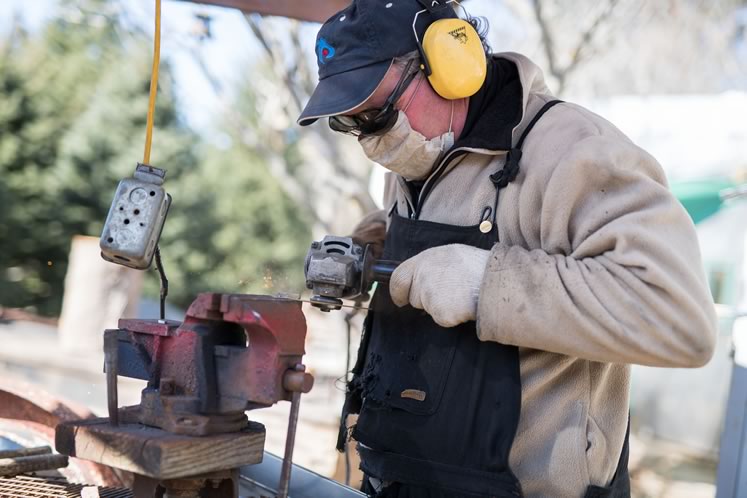
Dan works with vintage metal pieces – many from rusty farm implements he collects. Photo by James MacDonald.
With a rural Ontario lilt that sounds a little Irish, English and Canadian all at once, Dan, 57, hustles around his outdoor workshop of tool benches, windbreaks, sheds and lean-to workspaces. Between cutting metal and rummaging for the next collected item to press into service, the understated artist explains he’s particularly drawn to materials with a direct connection to the rural history of the area, such as old implements, seed drills and carriage wheels. He’s constantly on the lookout and attends farm auctions to hunt for material, often waiting years before he’s collected enough to begin a sculpture.
In addition to his bonsai creations, he fashions Gothic, otherworldly metal towers, palaces and cities in miniature. Some glow from inside with imbedded glass orbs that look like futuristic power sources. Still, Dan says some of those pieces aren’t as divorced from the natural world as you might think. Look closely at the rusty metal and you might see, for instance, the curve of what could be a mushroom cap.
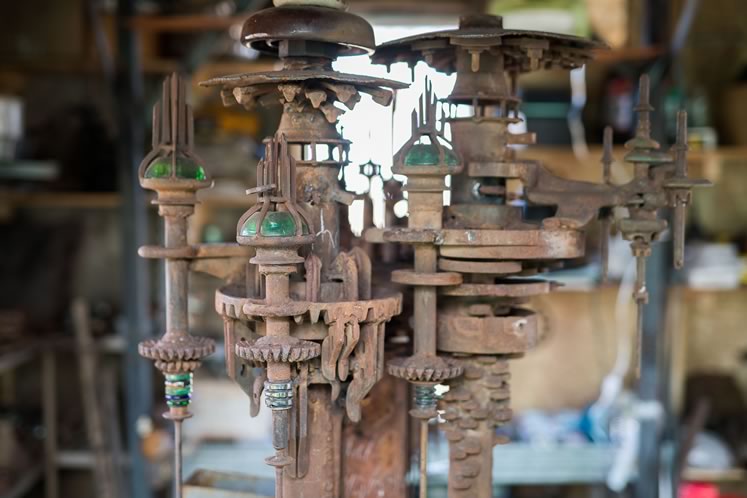
One of Dan’s sculptures reads as a futuristic cityscape or Gothic palace, with glowing glass orbs adding colour and mystery. Photo by James MacDonald.
He eschews painting his pieces, instead favouring the look of weathered metal. And after a rain, he loves seeing his lichen-covered pieces shimmering green. Old metal with high iron content encourages lichen growth. “It’s serendipitous,” he says. “I find it rather interesting.” His birdfeeders, designed with seed and water nooks to attract birds, offer a more deliberate marriage of nature and metal.
While his large birdfeeders can sell for as much as $1,200, he’s recently created smaller versions (starting at $125), sure to be snapped up at painter Linda Jenetti’s Mulmur studio where Dan is a guest during the North of 89 Studio Tour on the third and fourth weekends of September.
Find these guys online:
- John Farrugia – Craganrock Studio on Instagram
- Darrell Markewitz – Wareham Forge
- Tyler Kueper – Iron Butterfly
- Dan Sinclair – Iron Bonsai
Related Stories
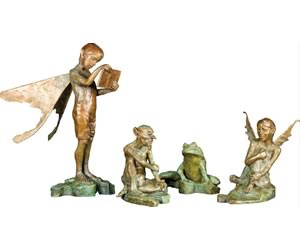
Hugh Russel
Sep 13, 2010 | | ArtsMulmur sculptor Hugh Russel’s work combines a keen knowledge of anatomy and movement, an emotional empathy with his subject, an often sly sense of humour, and a penchant above all for storytelling.
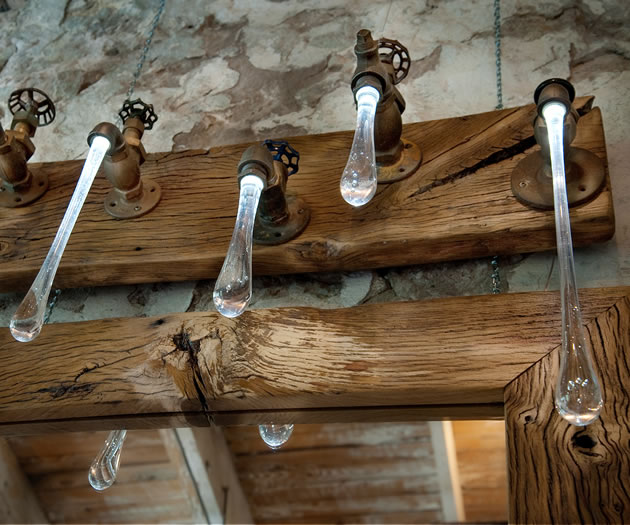
Deep Water Wood
Sep 16, 2016 | | ArtsHistory in the Making. For these furniture designers, style and story go hand in hand.
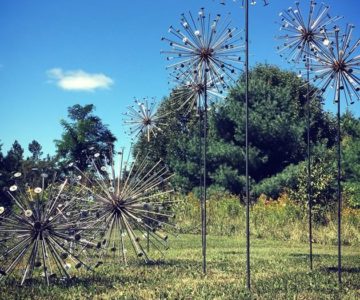
Jeff Smith
Jun 21, 2017 | | Artist in ResidenceJeff accepts commissions for wildlife and garden sculpture, as well as for custom iron gates and other commercial and residential installations.
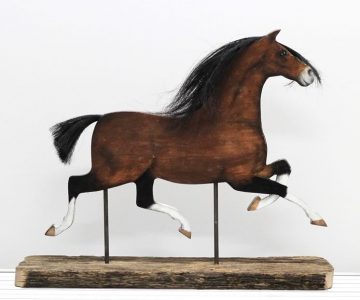
Vickie Wild
Nov 22, 2017 | | Artist in ResidenceMany of her pieces are commissions of beloved horses or family pets.
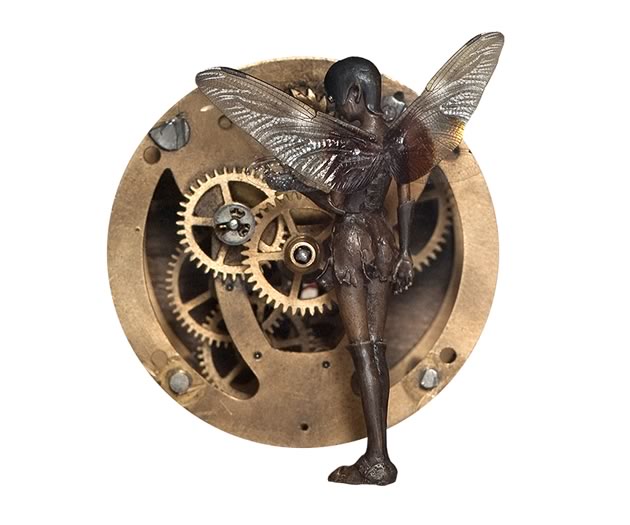
Gary Wright
Mar 23, 2015 | | Artist in ResidenceYou can visit Gary in his Hockley Valley studio. You’ll see finished pieces as well as works in progress, and you may even see faeries in his garden.






